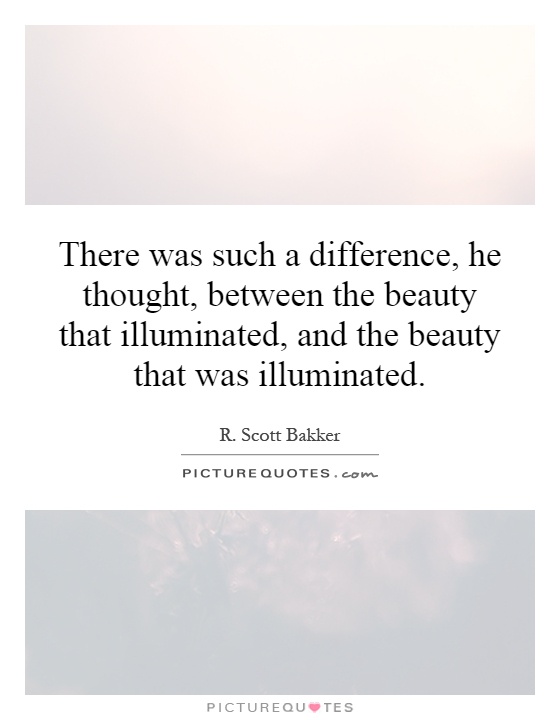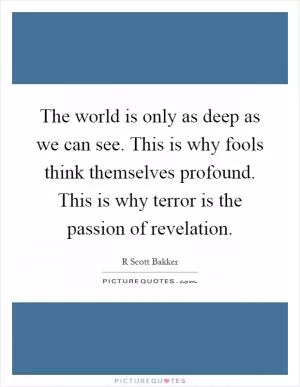There was such a difference, he thought, between the beauty that illuminated, and the beauty that was illuminated

There was such a difference, he thought, between the beauty that illuminated, and the beauty that was illuminated
In the world of R. Scott Bakker's novels, particularly in his acclaimed series "The Second Apocalypse," the concept of beauty is often explored in a complex and thought-provoking manner. Bakker's writing delves deep into the human psyche, examining the nature of beauty and its impact on individuals and society as a whole. One of the recurring themes in his work is the distinction between the beauty that illuminates and the beauty that is illuminated.The beauty that illuminates can be seen as the inner beauty that radiates from within a person. It is the beauty of the soul, the essence of a person that shines through in their actions, words, and deeds. This type of beauty is often portrayed as a rare and precious quality, one that is not easily seen or understood by others. Characters in Bakker's novels who possess this inner beauty are often portrayed as enigmatic and mysterious, drawing others to them like moths to a flame.
On the other hand, the beauty that is illuminated can be seen as the external beauty that is visible to the naked eye. This type of beauty is often associated with physical appearance, wealth, power, and status. In Bakker's world, this type of beauty is often portrayed as superficial and fleeting, a facade that can easily be shattered by the harsh realities of life. Characters who possess this type of beauty are often depicted as shallow and self-absorbed, using their looks and charm to manipulate and control others.
The contrast between these two types of beauty is a central theme in Bakker's work, highlighting the tension between inner and outer beauty, between substance and appearance. Through his characters and their interactions, Bakker explores the complexities of beauty and its impact on individuals and society. He challenges readers to question their own perceptions of beauty and to look beyond the surface to discover the true essence of a person. In doing so, Bakker invites us to reflect on the nature of beauty and its role in shaping our lives and relationships.












 Friendship Quotes
Friendship Quotes Love Quotes
Love Quotes Life Quotes
Life Quotes Funny Quotes
Funny Quotes Motivational Quotes
Motivational Quotes Inspirational Quotes
Inspirational Quotes